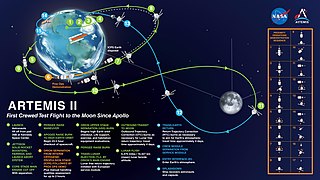
The Arab Satellite Communications Organization is a communications satellite operator in the Arab World, headquartered in the city of Riyadh, Saudi Arabia. Arabsat was created to deliver satellite-based, public and private telecommunications services to the Arab States, in accordance with International Standards. With 21 member countries, the organization plays a vital role of enhancing communications in the Arab World.
AsiaSat 5 is a Hong Kong communications satellite, which is operated by the Hong Kong–based Asia Satellite Telecommunications Company (AsiaSat). It is positioned in geostationary orbit at a longitude of 100.5° East of the Greenwich Meridian, where it replaced the AsiaSat 2 satellite. It is used to provide fixed satellite services, including broadcasting, telephone and broadband very small aperture terminal (VSAT) communications, to Asia and the Pacific Ocean region.

Boeing 702 is a communication satellite bus family designed and manufactured by the Boeing Satellite Development Center, and flown from the late-1990s into the 2020s. It covers satellites massing from 1,500 kg (3,300 lb) to 6,100 kg (13,400 lb) with power outputs from 3 to 18 kW and can carry up to approximately 100 high-power transponders.
Horizons Satellite is a joint venture between Intelsat and SKY Perfect JSAT Group. Originally formed in 2001, pursuant to a memorandum of understanding between JSAT Corporation and PanAmSat for the launch of Horizons-1, it was renewed for Horizons-2. JSAT later merged into the SKY Perfect JSAT Group and PanAmSat was acquired by Intelsat, but the companies continued with the relationship, with the order for Horizons-3e. Both companies also launched a joint satellite, Intelsat 15/JCSAT-85, but instead of the equal share agreement of this joint venture, JSAT owns a specific payload of 5 transponders out of the 22 Ku band transponders of the spacecraft.
The Broadcasting Satellite System Corporation (B-SAT) is a Japanese corporation established in April 1993 to procure, manage and lease transponders on communications satellites. Its largest stockholder, owning 49.9%, is NHK, the Japan Broadcasting Corporation. In 1994, it was ranked by Space News as the world's 19th largest fixed satellite operator.
Thaicom 5 was a geostationary communications satellite operated by Thaicom. It was used to provide communications services to Asia, Africa, Middle East, Americas, Europe and Australia.

This article documents notable spaceflight events during the year 2019.

This article documents notable spaceflight events during the year 2018. For the first time since 1990, more than 100 orbital launches were performed globally.
This page includes a list of satellite buses, of which multiple similar artificial satellites have been, or are being, built to the same model of structural frame, propulsion, spacecraft power and intra-spacecraft communication. Only commercially available buses are included, thus excluding series-produced proprietary satellites operated only by their makers.
Horizons-3e, also known as IS-H3e, is a high throughput geostationary communications satellite ordered by Horizons Satellite, a joint venture of Intelsat and SKY Perfect JSAT Group. The spacecraft is designed and manufactured by Boeing on the Boeing-702MP platform.

Kepler Communications Inc. is an international satellite telecommunications company based in Toronto, Ontario, Canada, with presence in the UK and the USA. The company's stated mission is to create the internet for space and allow-in-space communications for the future space economy. It has also worked on building a satellite network for IoT communication systems.
Intelsat 10-02 is a communications satellite operated by Intelsat. Intelsat 10-02 is the first operational communications satellite to have its service life extended by Mission Extension Vehicle-2, while still in service, in 2021.

This article documents notable spaceflight events during the year 2020.
PT Pasifik Satelit Nusantara (PSN) is a private Indonesian satellite telecommunications company.
Kuiper Systems LLC, also known as Project Kuiper, is a subsidiary of Amazon that was established in 2019 to deploy a large satellite internet constellation to provide low-latency broadband connectivity. The name Kuiper was a company codename for the project inspired by the Kuiper belt.
ViaSat-3 is a planned global constellation of three geostationary Ka-band communications satellites, the first of which was launched in 2023. Operated by Viasat, Inc., the satellites are intended to provide broadband connectivity with speeds of 100-plus megabits per second to homes, business and enterprise internet users, commercial, government and business aircraft, as well as government and defense markets, maritime and oceanic enterprises in the Americas, Europe, the Middle East, Africa and Asia-Pacific.

This article documents expected notable spaceflight events during the year 2026.

This article documents expected notable spaceflight events during the year 2027.







